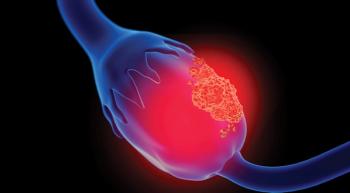
Refining Treatment With Immunotherapy in Melanoma
Key Takeaways
- BRAF-mutated melanoma treatment decisions are influenced by disease burden and symptoms, with targeted therapies often preferred for high-disease burden cases.
- PD-L1 testing, though not FDA-approved for melanoma, shows potential in predicting immunotherapy responses with approximately 80% accuracy.
Deciding on treatment for melanoma does not have to be a guessing game, says Keith T. Flaherty.
Patients with BRAF- mutated melanoma do not have to be arbitrary in deciding if they will choose immunotherapy or targeted therapy for the frontline setting, according to Keith T. Flaherty.
“Because we don’t do any testing of PD-L1 or anything else right now, selecting the best frontline treatment can feel like a coin toss,” says Flaherty, director of Developmental Therapeutics at the Cancer Center of Massachusetts General Hospital. “However, we almost have the evidence in front of us—even with PD-L1 alone—to say that it doesn’t have to be a coin toss. “We can actually inform that discussion in a pretty compelling fashion.”
Flaherty is one of several contributors to “The State of Melanoma: Challenges and Opportunities,” a paper published in Pigment Cell & Melanoma Research by the Melanoma Research Foundation.
The paper outlines some of the biggest challenges in melanoma, as well as opportunities for improvement across the treatment landscape.
The first step to making those improvements is to translate the science into clinical practice, says Flaherty, by properly sequencing immunotherapies and targeted therapies, especially in BRAF-mutant patients. Additional steps include investigating the value of PD-L1 testing and the causes of immunotherapy resistance. In an interview with CURE, Flaherty discusses these and other topics regarding immunotherapy in melanoma.
For metastatic BRAF-positive patients, what factors are considered in determining whether they should receive immunotherapy or targeted therapy in the first-line setting?
We don’t have any exact science for how to choose between targeted therapy and immunotherapy and, even in the immunotherapy space, we are still not in the position to triage patients between single-agent and combination immunotherapy.
We are still in an environment where people consider things as simple as disease burden, the pace and amount of metastatic disease, and the presence of symptoms as factors in deciding between immunotherapy and targeted therapy. These are factors that, as disease aggressiveness and disease burden increases, the balance is tipped toward targeted therapy for BRAF-mutated disease.
This is attractive because there is very high confidence that, with targeted therapies, you are going to get short-term disease control and symptom improvement and calm the situation down. However, with immunotherapy—and even combination immunotherapy—that confidence is notably less.
Those types of comparative statements are a little bit dangerous, because we have not actually had a head-to-head comparative trial; however, we have comparative data sets. We can look at multiple large clinical trials and try to determine how patients with high-disease burden do on this therapy versus how did they do on another therapy in another trial, and use that to help make decisions.
There is an obviousness of that statement that it has, in some way, almost led to conclusions by some that targeted therapies are for patients with high-disease burden and immunotherapies are for patients with low-disease burden. That is a ridiculous conclusion to come to. I say that because, if you look at the data on all of our therapies, they all work better in low-disease burden patients than they do in high-disease burden patients.
That is true for targeted therapies and for immunotherapies. I would argue that the issue about choosing between the two is most pressing in patients with low-disease burden, because that is the group that has the greatest likelihood of long-term benefit, whether they receive targeted therapy or immunotherapy.
We are very poor right now, in terms of translating science into clinical practice to make a treatment selection. Many people who lack real insight into how to do it, just say, “OK, well I am going to start with immunotherapy first. Then, if patients fail the immunotherapy, I will move to targeted therapy.”
That might sound good, but the problem is that—for all of our therapies—if you hold them until a later-line setting, they won’t work as well. Therefore, the likelihood that someone is going to get a durable benefit is going to be lower. To put a patient through a course or two of ineffective treatment and then finally put them on a treatment that they are going to respond to in third-line, their likelihood of responding is less.
Could PD-L1 or other molecular testing help oncologists decide between targeted therpies and immunotherapies?
When you focus on PD-1/PD-L1 antibodies specifically, there is no question that PD-L1 expression on tumor cells themselves actually gives you a good bit of information. It is just a good bit of information that we are currently ignoring.
PD-L1 testing is not currently part of the FDA approval for melanoma. The data shows that with each of the antibodies that have been tested in melanoma, so far in large clinical trials with hundreds of patients treated, responses to therapy can be predicted reasonably well—but not perfectly.
With an approximate 80 percent accuracy, you can say who is going to be a responder just by scoring PD-L1 expression on tumors. That means that you still have patients who are not clinically expressing PD-L1 but still respond.
There are some experts in the field who think this is a terrible problem. Some people think that if there is about a 20 percent rate of inaccuracy, we should throw it away, bury our heads in the sand, and ignore the facts. This is because we don’t want to deprive anybody of the possibility of responding.
I am not one who says that. That is ridiculous; I think we all aspire to go from 80 percent to 100 percent, and we have some hypotheses already in front of us that could allow us to get there. If we come up with a bit more of a signature with tumors and immune features with multiple components in that signature—not just PD-L1—we may already be at 90 percent predicative accuracy and that is already going to seem pretty compelling.
I would like to make the point regarding if you have a patient in front of you and they have a low-disease burden and a BRAF mutation and you are agonizing between targeted and immunotherapies. Imagine if you could do a test that would tell you that your patient has a less than 10 percent chance of responding, but you have a 5 percent chance of responding to BRAF-based therapy. That becomes a fairly easy discussion with patients on what they should receive.
Are there any theories as to why some patients develop acquired resistance to immunotherapeutic agents?
It is very much an ongoing work in progress in many melanoma programs, including mine. We are trying to throw technology at this question, to try and understand what is truly responsible—not just paint a picture of what it looks like. We need to understand what drives resistance. This is the melanoma field’s biggest problem right now. There really hasn’t been anything published regarding the cause of acquired resistance.
One theory is that there are additional negative immune regulators, beyond PD-L1, that become engaged.
Another hypothesis is based on the problem of heterogeneity in cancer—the fact that the tumor cells are not identical clones of one another. It is not just a problem for targeted therapy resistance, but also immunotherapy resistance. It may be the case that you are actually picking off large portions of the tumor population but not all of it with an antibody-based immunotherapy.
The sub-clones that survive are ones that are left visible, or they just don’t have the same features as the ones that are recognized and eliminated. A specific example of that would be the emerging data that shows that tumors with high-mutation burden are the ones that are most responsive to therapy.
It is very likely that, in any given patient’s spectrum of melanoma cells, many have a high-mutation burden and others are low. It could be that you are triggering an effective response against the portion that have a high-mutation burden and not so much the low.





